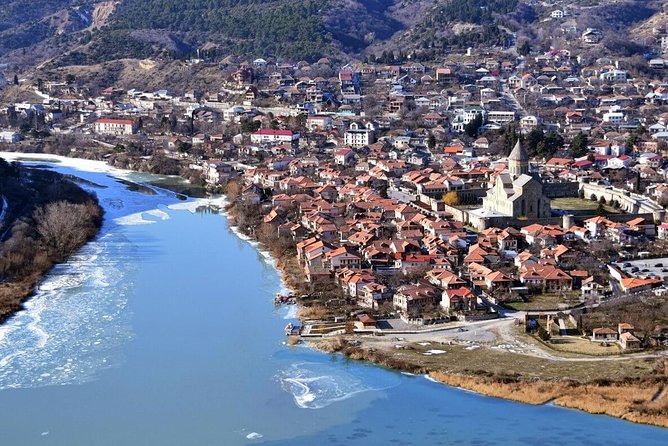
Mtskheta Gori anf Uplistsikhe Full-Day Private Tour from Tbilisi
On this full-day tour visit one of the famous among international visitors in Georgia. During this tour you can visit 3 towns: Mtskheta (previous capital of Georgia), Gori (Stalin museum) Uplistsikhe (rocktown).
Options
Mtskheta Gori anf Uplistsikhe Full-Day Private Tour from Tbilisi
Pickup included
What's included in Mtskheta Gori anf Uplistsikhe Full-Day Private Tour from Tbilisi
(Subject to Option Inclusions)Itinerary
Mtskheta Church of the Holy Cross
Travel to Mtskheta previous capital of Georgia. We will see Svetitskhoveli Orthodox cathedral, located in historic town of Mtskheta and built in 11th century. We will walk in the old city .Mtskheta is an ancient town of extraordinary importance to the Georgian nation, located about 20km out of Tbilisi. It was the capital of the eastern Georgian kingdom of Iberia from the 3rd century BC to the 5th century AD.
Jvari Church
we will visit Jvari monastery built in 6th century. Taking photos with very beautiful view of Mtskheta. The name of this monastery translated as the "Monastery of the Cross". Jvari Monastery stands on the rocky mountaintop at the confluence of the Mtkvari and Aragvi rivers, overlooking the town of Mtskheta, which was formerly the capital of the Kingdom of Iberia.According to traditional accounts, on this location in the early 4th century Saint Nino, a female evangelist credited with converting King Mirian III of Iberia to Christianity, erected a large wooden cross on the site of a pagan temple. The cross was reportedly able to work miracles and therefore drew pilgrims from all over the Caucasus. Jvari was listed together with other monuments of Mtskheta in 1994 as a UNESCO World Heritage Site.
Stalin Museum
The Joseph Stalin Museum is a museum in Gori, Georgia dedicated to the life of Joseph Stalin, the leader of the Soviet Union, who was born in Gori. The Museum retains its Soviet-era characteristics.Enshrined within a Greco-Italianate pavilion is a small wooden hut, in which Stalin was born in 1878 and spent his first four years. The small hut has two rooms on the ground floor. Stalin's father Vissarion Jughashvili, a local shoemaker, rented the one room on the left hand side of the building and maintained a workshop in the basement. The landlord lived in the other room. The hut originally formed part of a line of similar dwellings, but the others have been demolished.To one side of the museum is Stalin's personal railway carriage. The green Pullman carriage, which is armour plated and weighs 83 tons, was used by Stalin from 1941 onwards, including his attendances at the Yalta Conference and the Tehran Conference.
Inclusions
- Pickup and drop-off from designated meeting points
- Driver/guide
- Transport by air-conditioned minivan
- Food and drink
- Infants and small children can ride in a pram or stroller
- Public transportation options are available nearby
- Infants are required to sit on an adult’s lap
- Suitable for all physical fitness levels
- Children must be accompanied by an adult
- Dress code is smart casual
Meet
Pickup and Dropoff
Choose to be picked up from a list of locations
Additional Information
Hotel pick-up and drop off
Redeem
Ticket Redemption
• • Confirmation will be received at time of booking • Children must be accompanied by an adult • Dress code is smart casual






